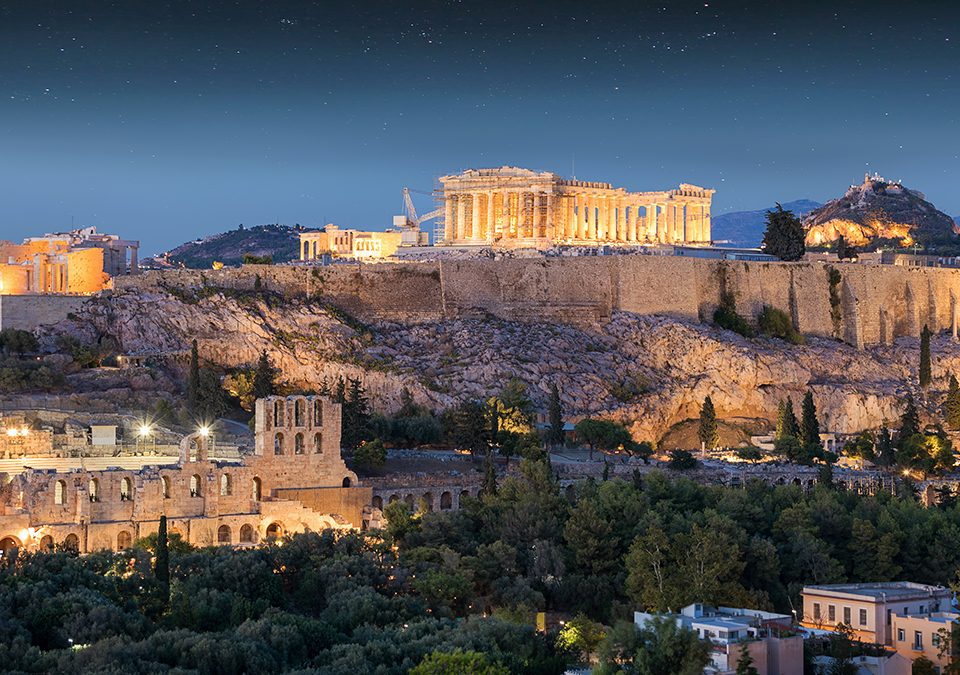Discover the hidden ancient gems of Attica

A land of pure ancient culture could not but brim with magnificent monuments of that era. The Acropolis, the Columns of the Olympian Zeus, the Acropolis Museum and the National Archeological Museum, iconic landmarks of the city of Athens, are marveled by visitors from all over the world.
What about the less “popular” archeological sites within the Region of Attica? Plan your next excursion and discover these hidden gems!
Amphiareion of Oropos
Just 45’ drive from the heart of Athens, on the road to Kalamos, the archaeological site of Amphiareion is not visible when on the road. Stop and take a glance from above. You have just discovered a small marvelous pine-clad valley.
Lying on the banks of a small stream, Amphiareion used to be an oracle in the late 5th century BC, dedicated to Amphiaraos, a hero of the ancient greek mythology, who was a victim of deceit and without realizing it, he found himself participating in the war of the Seven against Thebes.
Amphiaraos was a god of the underworld and a seer, adorned as a healer and known as the “Second Asclepius”. This is why his sanctuary at Oropos does not host only an oracle but an infirmary facility of the time.
The site was being excavated for 45 years, starting in 1884 and the diligent search brought to light the columns of a doric order temple. Unfortunately, the biggest part of the temple was never found as it probably got carried away by the stream. The 110 m. long and 11 m. wide arcade, with 39 doric columns is by far the most impressive element of the site, whereas, the 300 seat theater, built later in the 2nd century BC, is well-preserved and surely catches the visitor’ eye. However, the most intriguing aspect of Amphiareion is how smoothly its monuments are harmonized with the surrounding landscape.
Amphiareion of Oropos is an excellent daily excursion, to be perfectly combined with a dive or a small tavern in Oropos or Kalamos.
Open: 8:30 – 15:30 daily
Rhamnous
We live in 2024 but it wouldn’t be an exaggeration to say that there are still unknown archeological sites in Attica. Rhamnous is that kind of a secret spot, located 60 km northeastwards from the city center and just a 15’ drive from Schinias beach.
The site stands out for the temple of Nemesis, a goddess remarkably resembling Artemis, probably being a local version of the renowned goddess of hunt. Its sanctuary is estimated to have been built during the 6th century BC, and also used as a place of worship for Themis, the goddess of justice. A statue of Themis was discovered during the excavations in the 1970s and is currently exhibited at the National Archeological Museum of Athens.
A visit to Rhamnous is much more than its archeological findings alone; it’s the navigation within the site that matters, as visitors have the chance to delve into an ancient city and understand its urban planning.
Rhamnous was a border area of Attica, since the municipality of Oropos, located a bit more northwards, was sometimes controlled by Attica and sometimes by Boeotia. Being a part of the citystate of Athens, the settlement was fortified with a castle built at the highest point of the town, the remains of which are still visible. This barricade was used by locals to control the crossing to the Euboean Gulf.
The outermost location of the area and its subsequent abandonment have contributed to the conservation of the ancient urban planning of Rhamnous. On the contrary, the vast majority of central ancient municipalities of Attica are buried under the contemporary city.
Take a close look and identify the small details revealing the city of those years: residences, layouts, masonries and small alleys.
Flowing landscapes surrounding ancient remains that perfectly match olive trees and cypresses, overlooking the sea. Rhamnous deserves to be in your bucket-list and can be easily combined with a cool dive at Schinias beach.
Open: 8:30- 15:30 daily, Tuesday closed
Vravrona
The temple of Artemis is close to Loutsa and its long family beach with warm and shallow waters. Visitors can feel the tranquility of the place, bounded by an idyllic scenery, a wetland with lush greenery, a “gift” offered by Erasinos river.
The true “star” of Vravrona archeological site is the small, yet arresting, doric temple of Artemis, built over an older archaic temple during the first half of the 5th century BC. This was also a place for praising Iphigenia, daughter of King Agamemnon, condemned to sacrifice for appeasing the wrath of Artemis, who, however, saved her in the nick of time and took her as a priestess at her temple in Tauris. The myth says that Ifigenia fled from Tauris with her brother Orestis and the wooden xoanon (cult image) of the goddess, reached Vravrona and became priestess of the temple.
Very close to the site, the Archeological Museum of Vravrona is full of ancient treasures. The votive offerings discovered during the excavations manifest that Artemis was adorned as the goddess of nature, protector of children, marriage, birth and all the milestones in women’s lives. In fact, the small children’s statues exhibited in the museum are stunning.
Paying a visit to this archeological site is just one of the countless options in the area, which offers a galore of beautiful beaches and taverns with delicious local treats.
Open: 8:30- 15:30 daily, Tuesday closed.
Choose any of these three archeological sites and become familiar with the unknown ancient greek heritage of the Region of Attica. One thing for sure, you won’t regret it.




